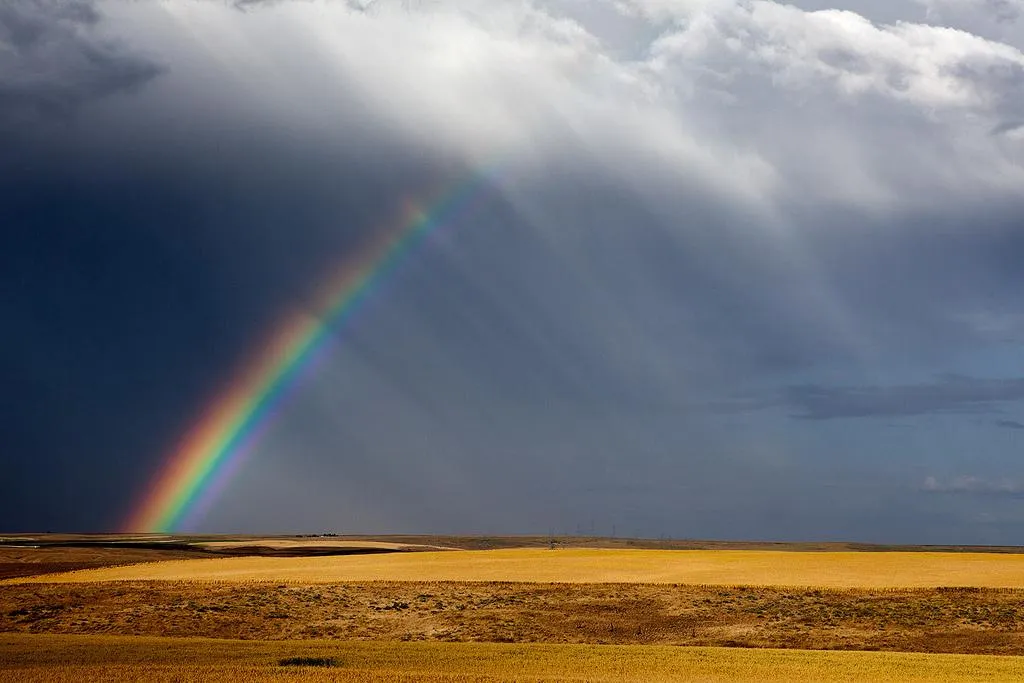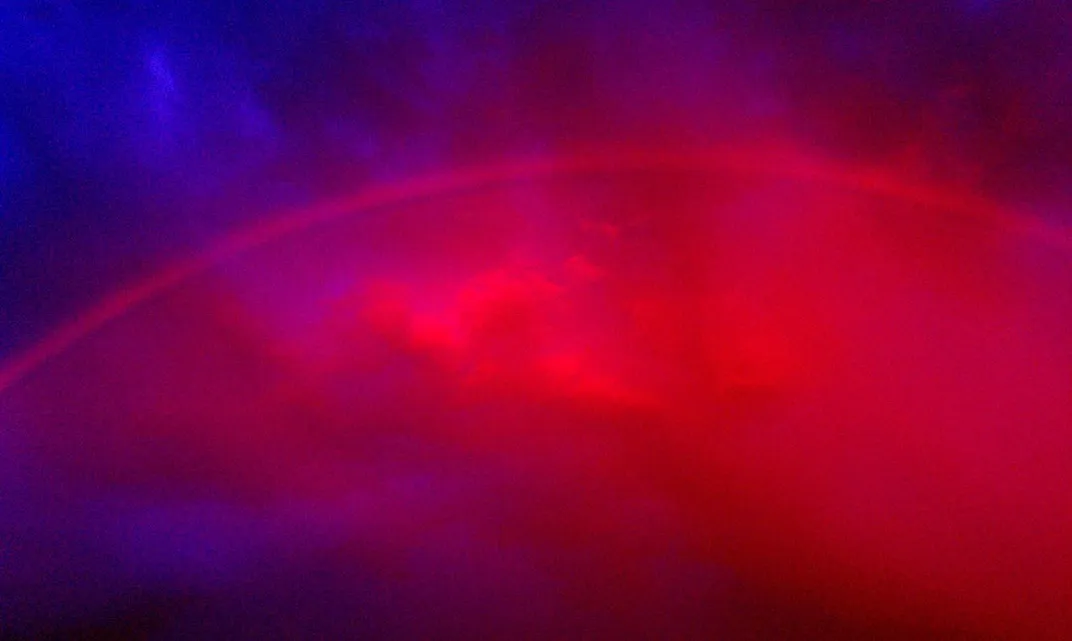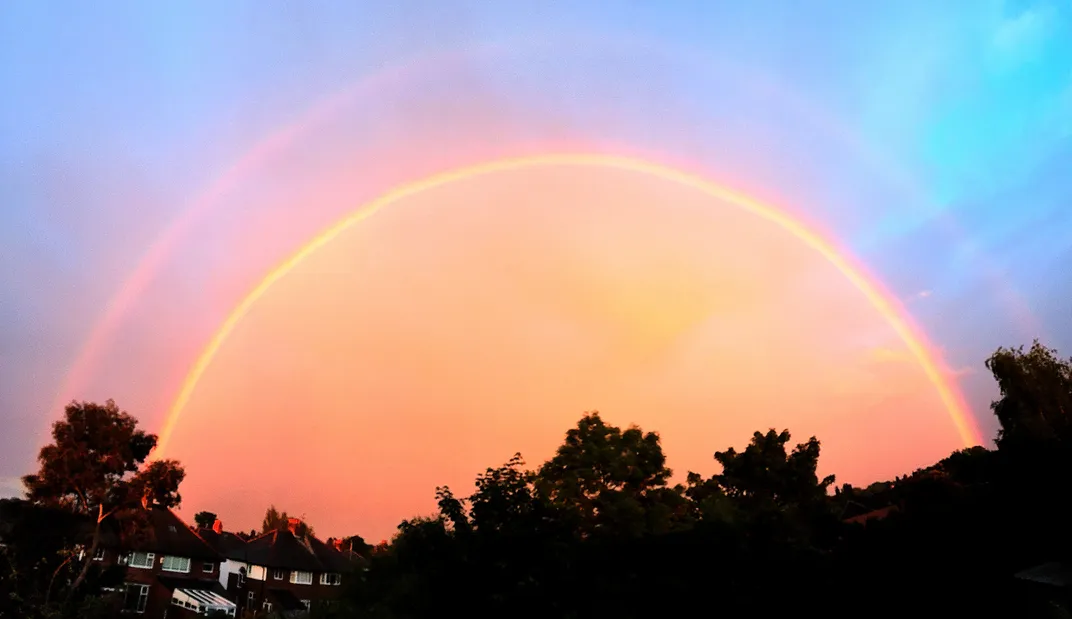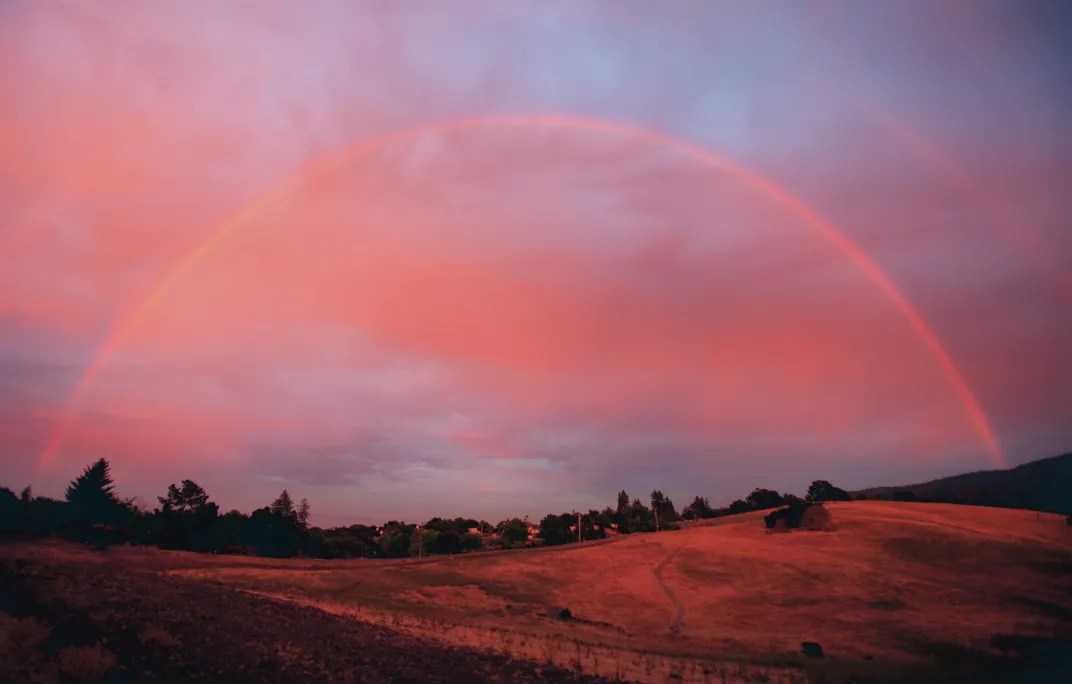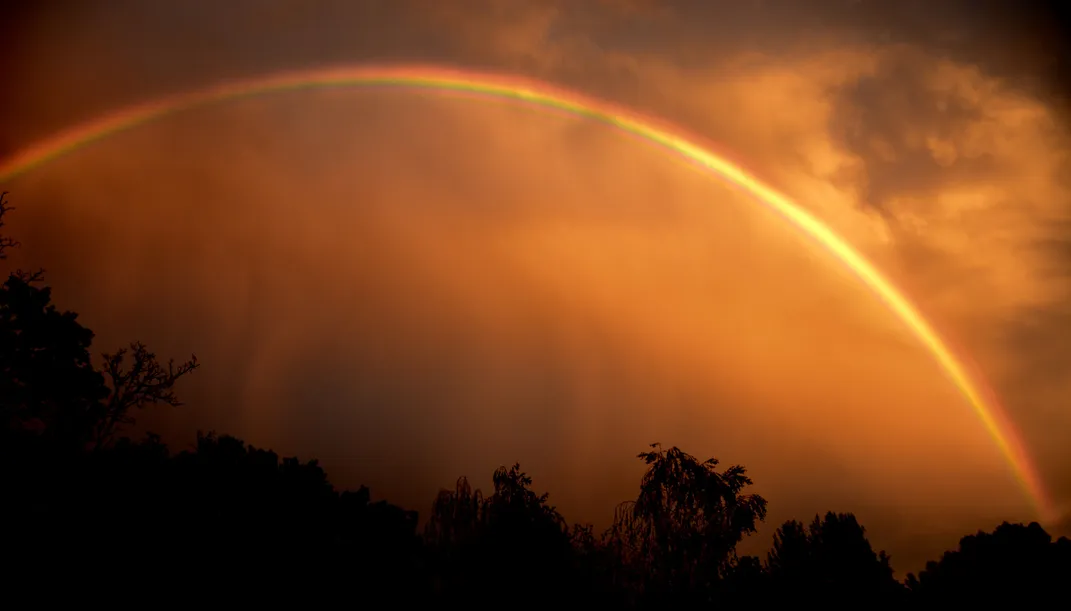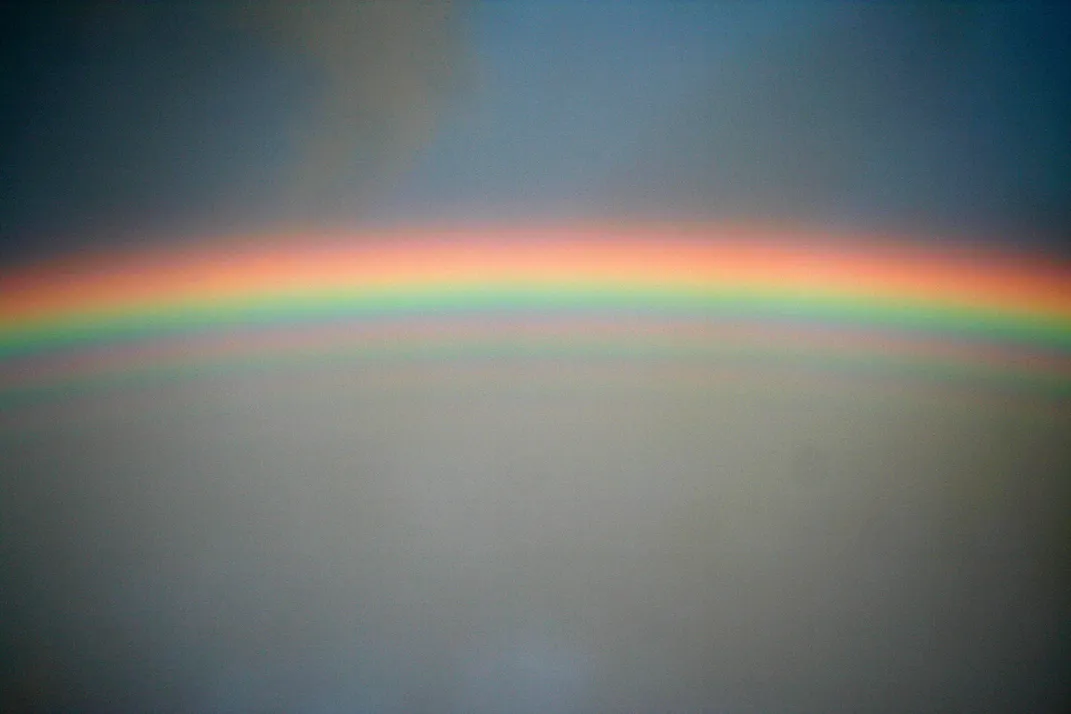Not All Rainbows Have Every Color
Depending on the angle of the sun, ROY G. BIV don’t all necessarily appear
Ask anyone to draw a rainbow and they'll remember the handy acronym ROY G. BIV for all the colors. But not all rainbows hold red, orange, yellow, green, blue, indigo and violet in their bands. Under certain conditions, many of those hues just don't appear.
In the past, scientists have classified rainbows based on the size of the raindrops that light passes through to create them, reports Sarah Zielinski for National Geographic. But the different color combinations that can result mean that rainbows can actually come in 12 different variations, researchers reported last week at the annual American Geophysical Union meeting in San Francisco, California.
At sunrise or sunset, when the sun is low to the horizon, a rainbow can glow a solid ruddy red or only light up with bands of red, yellow and orange. This is because during these times, light has to travel farther through the Earth's atmosphere and the other colors get scattered away, reports Thomas Sumner for Science News. Other rainbows might be missing just green, or blue.
Jean Ricard, of France's National Centre for Meteorological Research, and his colleagues dug through hundreds of rainbow pictures to come up with a classification scheme for these differences. Using the colors in each variety of bow, the researchers split them into 12 categories. They determined that the angle of the sun above the horizon plays a larger role in rainbow diversity than previously thought.
Even so, rainbows not only vary in coloration but also in unexpected features like shape. For example, twinned bows have an extra arc of color bending separately from the primary bow. Scientists don't yet agree on the cause of these unusual rainbows but one idea is that raindrops can distort and flatten as they fall and create non-spherical drops, according to the Atmospheric Optics website created by Les Cowley.
Other rainbows varieties include those with supernumerary bows—arcs of green, purple and pink that are likely created by smaller rain droplets. Double rainbows are another oddity, where the light reflects twice off of the rain, causing one bow's colors to mirror the other.
Not all rainbow-colored phenomena are true rainbows in the strict sense of sunlight interacting with raindrops. Mist, fog, dew, ice and other forms of water suspended in the air can create their own rainbows. Clouds can also create halos, arcs, coronas and other iridescent patterns that resemble rainbows, but aren't.
Classifying the many different rainbows may help in the search for extraterrestrial life, writes Zielinkski for National Geographic. Since they depend on water, spotting them on other worlds might indicate the presence of water and potentially, life. Of course, the categories also offer another way to appreciate the variation of rainbows' beauty.
